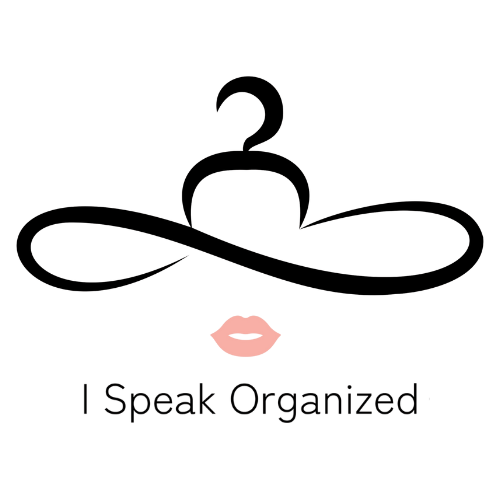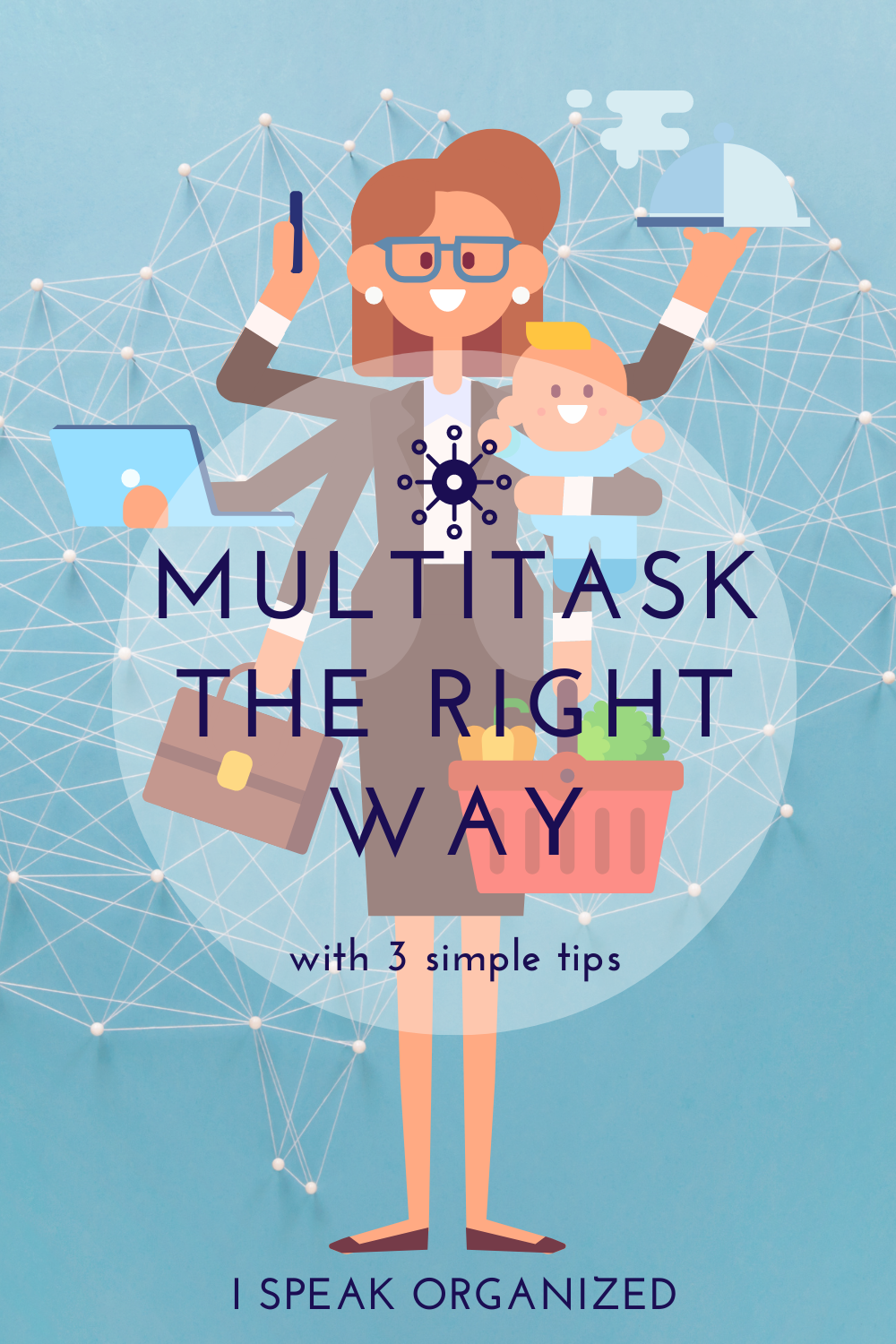Multitask The Right Way With 3 Simple Tips
5 minute read
+ Affiliate Disclosure
This post contains affiliate links. All that means is I’ve provided some product suggestions that I get a commission for, should you click on them and make a purchase. I only suggest products I use and love that are directly related to the content in this post. Thank you for your support! View terms for more information.
What you’ll get from this article | Quick navigation links
Multitasking may as well be a four-letter word these days.
Multitasking = Bad, that much is known. In fact, I don’t think I’ve read many articles or blog posts with anything good to say about it.
UNTIL NOW (kind of).
There are activities you can do simultaneously without decreasing productivity and strategies to look at multitasking in a fresh way. I’m reading a lot on this topic lately because many friends and clients feel one potent emotion in common - OVERWHELMED. I’ll be honest, I’m feeling that way lately too. We all wear many hats and are hyper-connected through the internet. You may also face the reality of working from home.
Working from home means task switching more than most.
In my case, I put on the social media hat to manage one of 7 profiles, then clean up the aftermath of a gnarly infant blowout, THEN realize a YouTube video just auto-published and needs to be share to Facebook, Pinterest, Instagram, and Twitter, but not before folding a pile of laundry and making lunch for my toddler. My day goes on this way until 9 PM because my husband works full time and has law school classes in the evening. Add in days where I’m out working with clients and managing their projects and you’ll know how insane I am. Trying to be on top of the productivity game is hard, and we often get caught in the web of half-finished stuff despite our best efforts.
So let’s talk about how to take our multitasking skills to the next level, regain some neural power, and be more productive. I’ll make you feel better and name these tips something other than the “m-word.”
Tip #1. Task Batching
Try saying task batching three times fast. You did it and now you’re smiling, aren’t you? Excellent.
Task batching is a simple productivity strategy where you group the same or similar duties together to execute in batches during a defined block of time. This is the opposite of task switching (or the m-word) because it requires you to devote your focus to something specific or singular. The multi-aspect comes from completing multiple successions of the same or similar tasks in a row.
An example of this could be a photo editing session dedicated to processing multiple images during a two-hour block of time. Another example could be sitting down to write a series of replies to emails in your inbox, then filing those emails, and unsubscribing from spam cluttering your inbox.
My advice is to pair this strategy with a time management practice like the pomodoro technique so you can stay on task without getting too mentally fatigued. I’d also recommend spending some time organizing your week with some kind of block schedule. You’ll track exactly what needs to get done and how much time you realistically have for all your tasks.
Tip # 2 Pairing Mindless Tasks
I’ve seen a couple good suggestions on how to do this and I’ll share a bit of the science behind it too. It’s no surprise that most of these things are household chores. Emptying the dishwasher, folding laundry, vacuuming... most daily housework. These tasks are pretty automatic and not super fun. Let’s seize this golden opportunity to optimize and make chores less monotonous. You can pair folding laundry with watching tv. Netflix and Fold is a perfect example of how to low key do two things at once. These two activities require very little focus and won’t sap your brain power as you switch between them.
You can put in a pair of Bluetooth headphones, fire up your favorite podcast or audiobook on audible, and get your vacuum on. Bonus points if you have a baby strapped to your chest taking a nap. Think about it. You’re wearing a weight vest, burning extra calories, and dust-busting at the same time.
The key here is not to take on tasks that require over 120 bits of mental processing power at one time. The neurons in your brain are living cells with metabolisms that must be fed. Deplete them by trying to process too much information, and you’re going to crash. Mihaly Csikszentmihalyi is a Hungarian-American psychologist credited for naming the psychological concept of flow, a highly focused mental state conducive to productivity. He estimated that the maximum amount of information humans can consciously pay attention to at one time is approximately 120 bits per second.
Csikszentmihalyi also estimated that it takes about 60 bits of processing power to understand a person speaking to us. This means that you could feasibly listen to a podcast or watch tv and execute a low-risk, mindless task. A mindless task is really just a task or a process you’ve repeated so many times you feel you could do it in your sleep. It’s easy to see how this idea works to make you more productive without being too mentally taxing.
Tip # 3 Automate
Understand that you can’t do everything. No one gets it all done all the time, so don’t fall into the trap of despair, my friend. Pour a glass of wine and remember you have some choices here.
A. You can put your head down and work like a dog until you collapse in the middle of the kitchen floor with a cracker in your hand for an involuntary nap.
B. You can spend some money hiring people to handle tasks for you.
C. You can delegate things to other members of your team or your family.
D. You can automate certain processes and tasks to execute in the background while you focus on other things.
Let’s unpack automation more because there are a few different strategies here.
You can set up autopay for most (if not all) of your expenses. You can automate credit card payments, medical bills, car insurance, and mortgage/rent payments. Once you set up your account and designate your due date all you really need to do is monitor occasionally. Add due date reminders to your calendar to help keep track of expenses in case something gets wonky.
You can automate your home with smart devices and timers to turn lights off and on, control your thermostat, arm your house, and start your morning coffee. These things run in the background when and how you want them to so you can devote precious neurons to more demanding tasks.
You can use software to automatically post to social media. Use something like Hootsuite or Later to upload content and schedule when to release your wisdom to the world.
Side note- this would be a great item to add to your schedule as a batch task.
Schedule auto maintenance and backup for your computer. This is one of those imperative, yet annoying jobs you must do to avoid costly, devastating repercussions. Seriously, it only takes one virus or other mishap to completely screw up your hard drive or your website. Schedule these updates regularly to cut down on the time they take and let them run overnight while you sleep.
Last, try a software like Microsoft OneNote to automatically convert handwritten notes to electronic text. It’s free, cloud-based, and integrates across all your devices. You can achieve similar results by scanning notes as PDFs to Google Drive, then opening them in Docs to edit. This is hands down, my favorite automation tool. OneNote does a decent job of deciphering my chicken scratch brain dumps (especially if I write in ALL CAPS) when I’m ready to draft copy or content online. I’ve saved so much time with this practice that I get misty-eyed with gratitude just thinking about it.
So there you have it. A few, solid examples of how to do the M-word the right way to make you a Productivity Boss. Remember our key takeaways here -
1. Batch tasks in manageable blocks of time (using a timer)
2. Pair safe, auto-pilot tasks together to optimize productivity without frying your brain.
3. Automate all the things and spend that extra time doing something rewarding. You deserve a reward, dagnabit!
Until next time, my friend.
Yours in Automation,
Melanie



